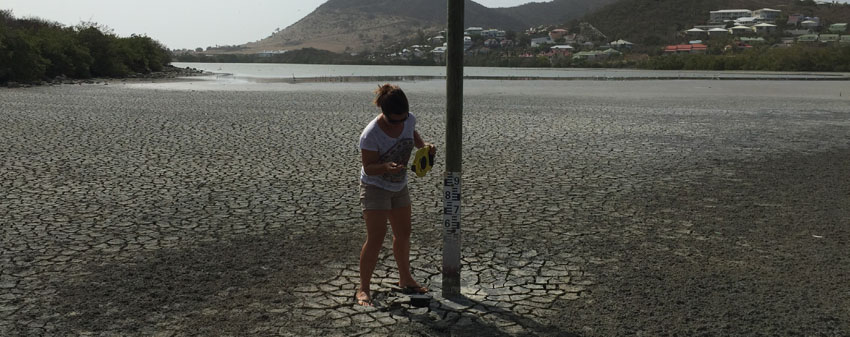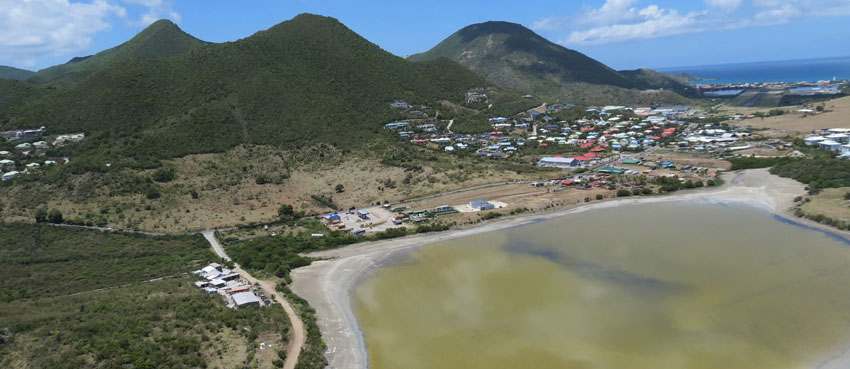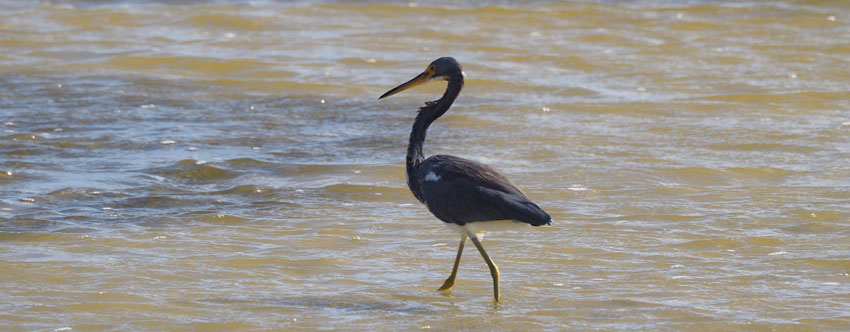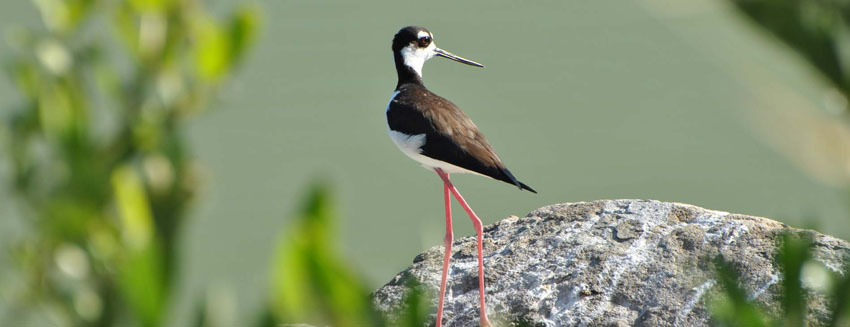1250 birds — 340 of which were black-necked stilts — were sighted in just two mornings in April 2016 at nine of the salt ponds on the island.
This data was collected during the annual campaign to study the ponds and the birds that visit them, as run by Caroline Fleury and Ashley Daniel. A large number of these birds migrate in the autumn and come south from North America, and head back in the spring to more northern latitudes, certain of which are 6,000 kilometers from Saint Martin. Forty species of shore birds — those small waders that dig their beaks in the silt of the ponds to find their food — were observed, as well as the Bahama pintail, the only member of the duck family to live on the island year-round, in contrast to the four other species present only in the winter : the blue-winged teal, the Eurasian teal, the ruddy duck, and the ring-necked duck. The scientific study of these birds revealed a few unexpected surprises, including the observation of rare species, such as an American duck, a Wilson’s snipe, a ruff, and a hooded merganser. The lives of these birds are closely tied to that of the ponds, which are closely observed by the Réserve Naturelle. Photos taken at regular intervals show all kinds of changes : cutting of vegetation, landfill, the height and color of the water, while the level meters installed at the Etang de Chevrise, the Etang Guichard, the Etang de Grand-Case, and the Mare Lucas in Oyster Pond, also register changes in the height of the water.
The protection of the nests and eggs belonging to these birds is of essential importance, but children are often unaware of this and amuse themselves by breaking eggs found near the Etang de la Barrière. Result: only two baby birds were observed during the hatching period on this pond. Please note: the walking of domestic animals is forbidden in these wetlands, which are an officially protected biotope, with the goal of preserving the tranquility of popular reproduction areas for the island’s birdlife.




















